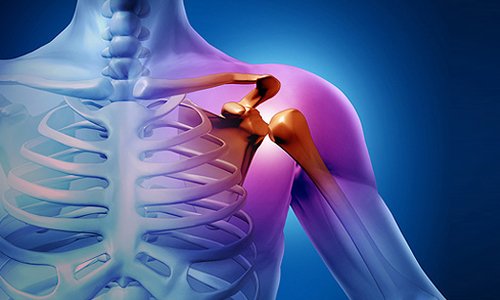Osteosarcoma: causes, symptoms and treatment
Osteosarcoma (a her symptoms do not manifest immediately) – this is a cancerous disease characterized by lesions of the skeletal system of the person. Disease development is rapid, in a short time the tumor takes metastases in all organs. Sarcoma arises predominantly in the metaphysis, long bones adjacent to the epiphyseal plate. As the tumor immediately let the metastases, the disease is considered very dangerous and sometimes incurable. Osteosarcoma mainly occurs in men aged 25-30 years. Often it affects and more young organism in the period of intensive growth of the bone tissue, i.e. In adolescence. Most often affects the long bones of the legs, at least – the hands, bones of the spine. The lesions affected the femur, tibia, humerus, and spine. You can meet osteosarcoma of the ribs, pelvic bones, sacrum, femur. The danger of the disease lies in the fact that it manifests late symptoms.

causes of osteosarcoma
so far scientists have not figured out the exact cause of this disease. It is safe to submit only high-risk groups;
- Age. Most often it affects teenagers and young men. Moreover, the disease occurs in girls 10-14 years boys – 14 to 19 years. Older people are no exception. 1/10 of the number of cases accounted for by this age.
- the Growth of the body. It is noticed that the high and growing young men exposed to the disease osteosarcoma more than their peers low. This is because the rapid growth of bones simultaneously with the normal cells of the bone tissue begins to produce atypical cells, i.e. Cancer. Sometimes these foreign cells are benign in nature but over time they can malignization, become malignant.
- Exposure. Sarcoma can start to grow after irradiation of the body or in the treatment of other tumors. In the area of risk are young people who have had radiation therapy in the period of bone growth. Radiation-induced sarcoma may develop only after strong irradiation, x-rays on disease is not affected.
- the Presence of bone disease. The development of sarcomas in adulthood may be a consequence of illness of the bones in childhood.
- Paget's Disease. Occurs in older people and has a precancerous stage. In the absence of appropriate treatment quickly develops into a malignant tumor.
- Hereditary factor. In the presence of disease in relatives may develop sarcomas in children in adolescence.
- the Development of benign tumors. Osteohondromy – benign in cartilage or bone tissue. In some circumstances, can grow into malignant tumors.
- the Syndrome Li-Fraumeni syndrome. It is a hereditary disease characterized by inheritance of gene p53 that contributes to the appearance of the tumor process in the bones. This gene is responsible for cell division. When you inherit the pathology of the person is at risk for cancers not only of bone tissue.
- Retinoblastoma or tumor of the eye. In radiation therapy of the disease increases the risk of developing sarcoma, which affects the bones of the skull.

the Disease is poorly studied, there are cases of osteosarcoma for no apparent reason.
Signs of progression
As with all cancers, osteosarcoma is detected most often at the time of progression. The signs at this time are mild. Dull pain in the joints are attributed to not only patients, but doctors inflammatory manifestations or consequences of injuries. With progression of the disease there are other symptoms:
- Swelling in the joint.
- severe pain.
- Pain when pressing on the lesion, for example, in the region of the sacrum.
- Movement bring discomfort, lesions are limited in movement, lameness develops.
- the affected muscles.
- the Appearance of metastases, through the blood penetrate into distant organs: lungs, brain, etc.
It is Important at the first sign of illness to go to the clinic and get tested in the first place – radiography.
Even with the rapid development of the disease timely treatment can give a positive result.

Diagnosis of tumors
because the symptoms of the disease in the early stages can be confused with manifestations of other diseases, diagnosis is very difficult. In the survey are the following procedures:
- X-rays. Osteosarcoma identifies and helps to diagnose pathological fractures in the legs, arms and spine.
- Magnetic resonance imaging (MRI). Is applied to detect the precise lesion reveals the presence and location of metastases.
- fine Needle biopsy. The study takes a sample of bone tissue allows to determine the degree of malignancytumor.
- Positron emission tomography (PET). The tumor is identified by specific characteristics.
- Genetic testing. Allows you to identify the hereditary factor and to find the pathological gene.
- Laboratory tests, including biochemical analysis of blood. It provides valuable information not only about the development of the disease, but also about the condition of the whole organism.
Particular treatment
Treatment involves the patient's stay in a special clinic. Initially investigated the presence of concomitant diseases, stage of osteosarcoma, manifestations of disease, etc. Based on these data, is assigned an individual treatment.
Activities for the treatment of osteosarcoma include the following:
- Surgical removal of the tumor.
- Radiation therapy.
- Drug treatment.
Before surgery the patient is undergoing chemotherapy. This allows to considerably reduce the tumor size and destroy micrometastases.
Conducting the surgery, doctors remove the entire affected area, capturing also the healthy tissue. Modern medicine can avoid a full amputation. With the latest technology the patient keep the limb by replacing some part of the bone prosthesis. Amputation may be indicated only in the later stages of the disease with a large lesion.
As this disease is characterized by the presence of metastases, there is an additional removal from the lungs, lymphatic system, etc. If treatment was carried out on time, you can save a minimum of 5 years of life 90% of patients with this pathology.





